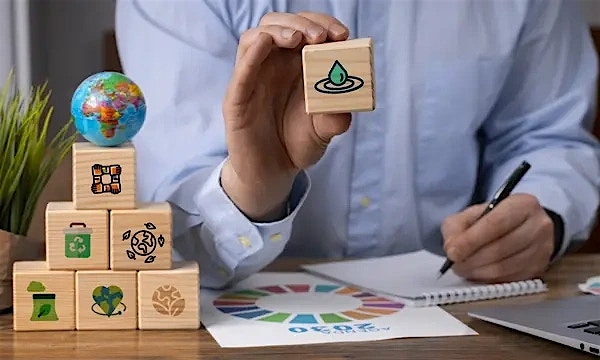Technology and the use of AI in supply chains are two of the biggest trends for the supply chain industry today, which is something that has been more prevalent over the past couple years than at any time before.
Disruptions in supply chains have pushed companies of all sizes to embrace technology and embrace these new trends of supply chain into the way they’re doing business on a day-to-day basis.
For companies to do this, they’ll need to ensure that they have the requisite talent in place to build an effective supply chain team and address skills gaps. Global Head of Supply Chain Services at HCLTech Tiffany Mackinnon stressed that there are a lot of unknowns within the supply chain industry when it comes to diversity.
Mackinnon, recently named one of the Top 100 women in Supply Chain by Supply Chain Digital Magazine, says that addressing issues in the supply chain goes further than technical solutions.
Diversity in the supply chain
According to Mackinnon, diversity in the supply chain has not been given as much attention as it should. There are a lot of unknowns within the supply chain industry and global supply chains should contain elements of diversity.
“It’s easy to say ‘yeah, supply chain is global, therefore it has to be diverse,’” said Mackinnon. “And to some degree, that’s true, but I think you really have to look at elements like systemic racism and you must delve into those types of complex matters to see how far does that reach really go and does it affect the supply chain?”
Part of fixing any gaps in diversity or gaps in skill is first acknowledging that there’s a gap to be addressed.
When diversity, equality and inclusion (DEI) initiatives are leveraged by an organization, it leads to sustained innovation. This is what HCLTech believes fully and is at the center of the culture promoted by HCLTech throughout the organization. HCLTech provides its employees with various resource groups to help maintain a diverse talent base.
These groups include Pride@HCLTech, Ability Connect Network, Women Connect Network, Single Parent Network and the Heritage Network.
“You can’t fix the problem that you don’t acknowledge and that you don’t know exists,” said Mackinnon.
Increasing awareness and increasing the science and technology behind determining how supply chain diversity is measured are two initial steps that leaders and organizations can take to address diversity in their supply chains.
Hiring practices for improving diversity
To successfully build diversity, an organization must understand it’s company culture and then try to align and understand your resource culture. Without these two pieces aligned, there’s a lack of synergy within hiring practices and your organization won’t get the outcomes it wants.
In building a diverse supply chain team, Mackinnon says that companies should ensure they’re equipped to have effective remote or hybrid working models. Telework has become increasingly desired by employees, but these models also help widen the pool of possible applicants to your team.
“Our supply chain was built during the midst of COVID and it was global, but we weren’t able to go out and hire people face-to-face so everything was done remotely,” said Mackinnon. “And, overall, we have made some good calls and have successfully built an amazing team.”
Mackinnon said that these good calls can be attributed in part to hiring for the culture and hiring people that would fit with HCLTech.
“We made sure they had skills, but some of the soft skills are teachable, whereas some of the hard skills for us were really the ability to fit and the ability to be resilient and to not only exist, but to thrive in the HCLTech environment,” Mackinnon said.
Prior to the COVID-19 pandemic, Mackinnon says, the supply chain team would have screened all the resumes, had a shortlist of candidates and then would have flown out and done face-to-face interviews. While this approach would have still maintained a team mentality, the pandemic shifted the paradigm for Mackinnon and her teammates with it becoming more important to lean on each other internally.
“It was really important that first we chose the resumes based on fit and based on skill set—the two most important criteria for us in some cases,” said Mackinnon. “We had people that had great skill sets, but they didn’t have the fit and, for us, that was important.”
Leading a skilled, diverse supply chain team
Nobody’s perfect and we’re all susceptible to mistakes, but it’s important to give people the opportunity to take a chance on someone and “to let someone come on and potentially fail, but give them that opportunity because you might be surprised,” according to Mackinnon.
Among tips for being an effective, inclusive leader is to learn the culture of your audience, learn the culture of your team members, and understand what their values are and what matters to them. If you can have an employee that is fulfilled and happy, they’re going to be generating better work, be more productive and work harder.
Through mentorship, Mackinnon ensures that the supply chain team is developing professionals within the industry and providing them with opportunities for growth.
“Don’t be afraid to think about what’s impossible. I didn’t think a supply chain was possible here at HCLTech, I didn’t think a logistics organization was possible at HCLTech,” said Mackinnon. “Many things that I never thought were possible have happened and that I’ve been privileged enough to see during my tenure at HCLTech.
“So, I would say don’t ever turn away from what’s not possible because that may become your reality.”





